Sarah Schrauwen
Designer, Editor
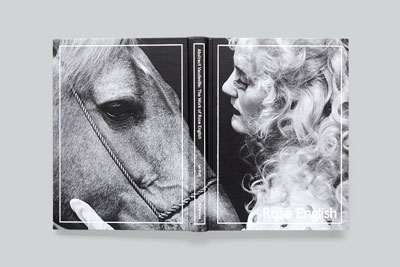
Full cover of “Abstract Vaudeville: The Work of Rose English” by Guy Brett, with texts and scripts by Rose English and interviews by Anne-Louise Rentell. Edited by Martha Fleming and Doro Globus. Published by Ridinghouse, 2014. This book was my first commission as an independent designer.
Primary design concentration:
Print Design
Most preferred tools for designing:
Apple MacBook Pro, Adobe InDesign
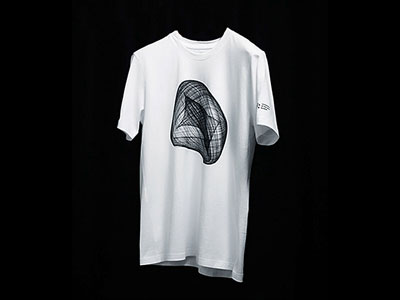
T-shirt design, created for Nike, during the “Journey to Greatness,” a collaboration between Nike and the University of the Arts. Other team members: Alexander Leonhard, Valentina Verč, Freya Dyson.
How and why did you choose to become a designer?
When I was studying Literature and Linguistics at the University of Antwerp, I joined the university’s student magazine. At the first meeting, the designer asked if I was good with computers, and when I said yes, he asked if I wanted to help him out with the layout of the publication. That’s how I ended up working on its design for three years. When I graduated with my Master’s, I wanted to do something else; something less academic and more creative. I moved to London to study graphic design for a year—it was like a conversion course: about half of the students came from a different background, like me. At that time, I wasn’t sure if I fit in, but I ended up loving the course and graphic design. I found a way of combining my language/editing skills and organisational nature with design, and that’s when I knew that I wanted to be a designer.
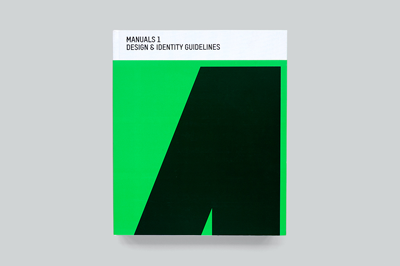
Cover of “Manuals 1: Design and Identity Guidelines” by Tony Brook, Adrian Shaughnessy, and Sarah Schrauwen [Editors]. Published by Unit Editions, 2014. Designed by Spin. I worked at independent graphic design publishers Unit Editions for two years—this is one of the last books I worked on with them and it’s the one I am most proud of.
What are some of the challenges you encounter as a designer and how do you deal with them?
Nearly four years after graduating and working in London, I moved back to Belgium to start my own studio. At the moment, my toughest challenge is building a network here and getting the jobs that I really want. My goal is to work on book projects with publishers and cultural institutions, and eventually maybe even publish myself—but it’s not easy at the moment. How I deal with it now is emailing a lot of people, meeting designers and publishers, and not giving up!
What is your definition of an “elegant solution,” that is, good design?
For me, good design is timeless, beautifully simple, and effective. Collaboration is also key—in the end, we want a happy client and a happy designer.
From skills to values, what makes a designer successful?
I think that nowadays it’s very valuable to be multidisciplinary—if you also know about video editing, photography, web development, copywriting, sales, etc., you are one step ahead of your “competition.” But I think knowing about different disciplines also has a positive effect on your design practice—it makes you think outside of the box.
How do you stay motivated and grow personally and professionally as a designer?
I see every project as a new challenge. Sometimes people ask me to do things that I have no experience with, and even though that freaks me out, “not knowing everything,” I take those projects on anyway—most things you can learn while you’re doing them, and there’s always the internet to help you! I always end up learning a lot and I think that’s important in this job. I guess being ambitious helps in staying motivated: I always want to know more and be better. Now that I’m getting the hang of print design, I would like to learn more about front-end design for websites—maybe similarly to telling stories with books, I can tell stories with websites!
For those aspiring to become a designer, whatever the discipline, what is your advice?
Work hard and keep an open mind—take everything in and learn to form your own opinions about it. College is a great time to experiment with concepts and techniques, but don’t shy away from the technical aspects of design—in school they don’t teach you how to prepare files to go to print, or how to build a website from scratch—hone your skills in your free time.
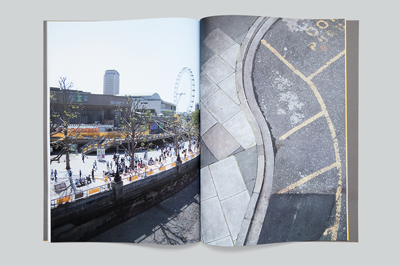
Spread from an A3-sized publication created during the Design for Visual Communication course at London College of Communication, 2011. The theme of the magazine was “Structure and the City”—I loved being responsible for all aspects of getting this publication together: the research, writing all of its content, taking the photographs, printing and binding it.
What is your quest in design, from a professional practice, education or evolution standpoint?
My quest is to stay curious and passionate about this profession, to learn more every day, and to make good and valuable work.
Previous: Kate Pociask | Next: Isabel Urbina Peña
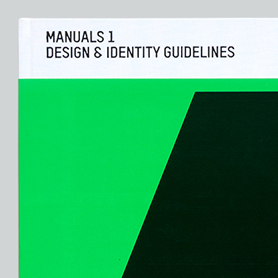
Support this solo initiative
What began as a collection of links has evolved into a comprehensive archive committed to creative culture—offering so far 395 interviews with under-the-radar Artists, Designers & Makers, in addition to 202 write-ups across events, books, movies, more. Free to explore. Free from ads. If you gain a level of motivation, knowledge, even delight, from Design Feast, please support on Patreon. Thanks for your consideration!
Wishing you continual success,
Nate Burgos, Content Creator & Publisher
Comments
There are no comments yet.
Leave Your Comment